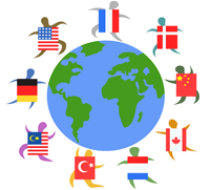Intercultural relationships in policy field and in science field: a comparison through the scope of multiculturalism
On May 24th, Pavel Sorokin (PhD in sociological sciences, researcher at the Centre for social studies of business administration, senior lecturer of the Department of Human Resource Management at the Faculty of Business and Management HSE), made a report "Intercultural relationships in politics and in science: a comparison through the scope of multiculturalism". The report took place at the scientific seminar "Culture matters".
Intercultural interaction – one of the key phenomena of today's global society. Multiple collisions of various cultures take significant and somewhat controversial impact on the field of socio-cultural science (psychology, sociology, etc.). International scientific hierarchies and scientific standards are formed, and they serve as platforms for collaboration between scientists from different cultural (scientific) traditions. However, a significant part of the world’s scientific community experiences difficulties trying to get integrated into these standards.
Despite the large number of studies on multiculturalism, there has not been many attempts to extend its application onto the understanding and management of intercultural relations – not only in the field of social and cultural policy, but also in the field of social and cultural science (despite the fact that multiculturalism is a product of the latter). The proposed expansion, according to the speaker, is efficient both in terms of solving the problems of modern science, and in terms of testing, specifying and developing of the original concept of multiculturalism.
The initial idea of the report is the significant difference in cross-cultural interaction between the "field of science" and the "field of policy". This distinction lays in fundamentally different positions of members of the peripheral, non-Western cultures inside each of the fields.
A review of the current situation in the field of intercultural communication between these two fields was presented in the report. The lecture ended with the statement of the research goals for the further studies.

